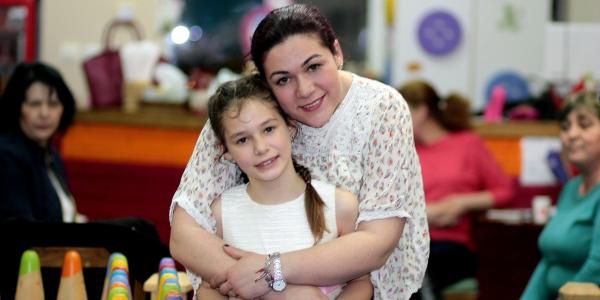It’s Time to Talk About It

National Eating Disorder Awareness Week brings attention to the issue of body dissatisfaction and how it affects your relationship with food. Any time of any week is a time to talk about it.
A billboard on my drive to work has a new advertisement for a local coffee shop. It features their signature coffee mug with a tape measure around its middle and suggests you buy their super-skinny latte to help you with your New Year’s resolution. Funny thing -- I have that very same coffee mug, and I like it because my hand can grasp the middle indentation of the mug more easily. I would never have connected a slimming message to its shape. Not until the billboard….
We live in a culture saturated with body image messages specifically designed to make you think critically about your body. So what’s the harm in that? The fact is, body dissatisfaction is the most powerful and consistent precursor of anorexia nervosa, binge eating disorder, bulimia nervosa, and other eating disorders.
By age 6, girls are already starting to have concerns about their own weight or body shape. Forty to sixty percent of elementary school girls are concerned about becoming too fat.* By the time they’re teens, 60 to 70 percent of girls and 30 to 50 percent of boys are actively dieting or trying to lose weight by other means.
Children’s body images are shaped by what they see around them. Their impressionable minds are consistently presented an idealized body shape that becomes normalized and expected. Beyond the media though, body dissatisfaction enters the home when parents and friends talk about changing their bodies through diet, exercise, or surgery; or make harmful comments (such as weight-based teasing) intending to be helpful.
Try this during National Eating Disorder Awareness Week: notice the images and messages around you that make you think your body is not okay, or not good enough. Once you’ve started to see these messages--on billboards like I did, on TV shows, in magazines or social media, or even from conversations with friends--try one or more of the following:
- Talk about the messages and how you feel about them with people who are important to you. This conversation could be a pivotal point of intervention for your children, your colleague’s children, and others.
- Learn more about eating disorders, and take the 3-minute screening quiz.
*Smolak, L. (2011). Body image development in childhood. In T. Cash & L. Smolak (Eds.), Body Image: A Handbook of Science, Practice, and Prevention (2nd ed.). New York: Guilford.





